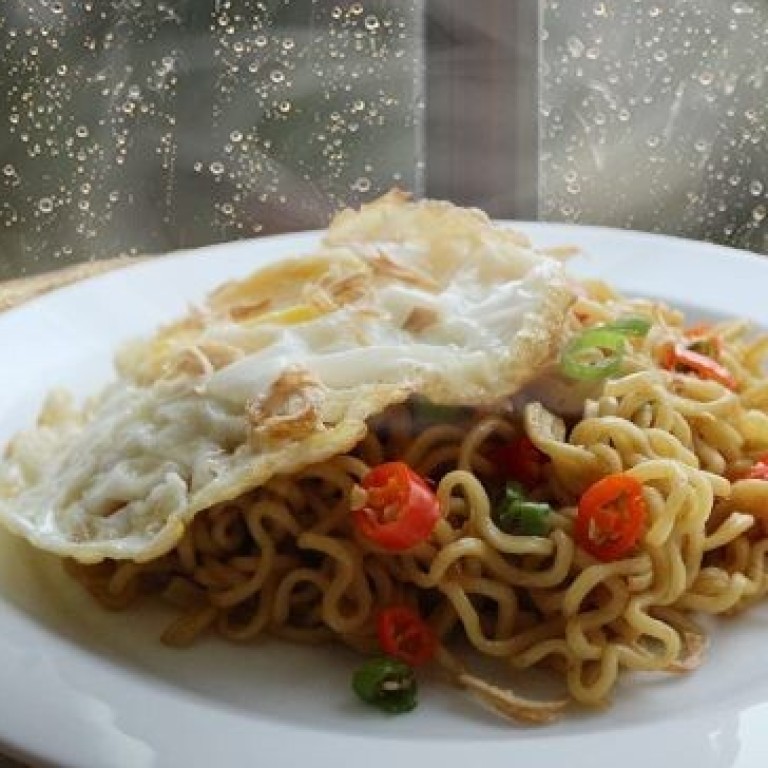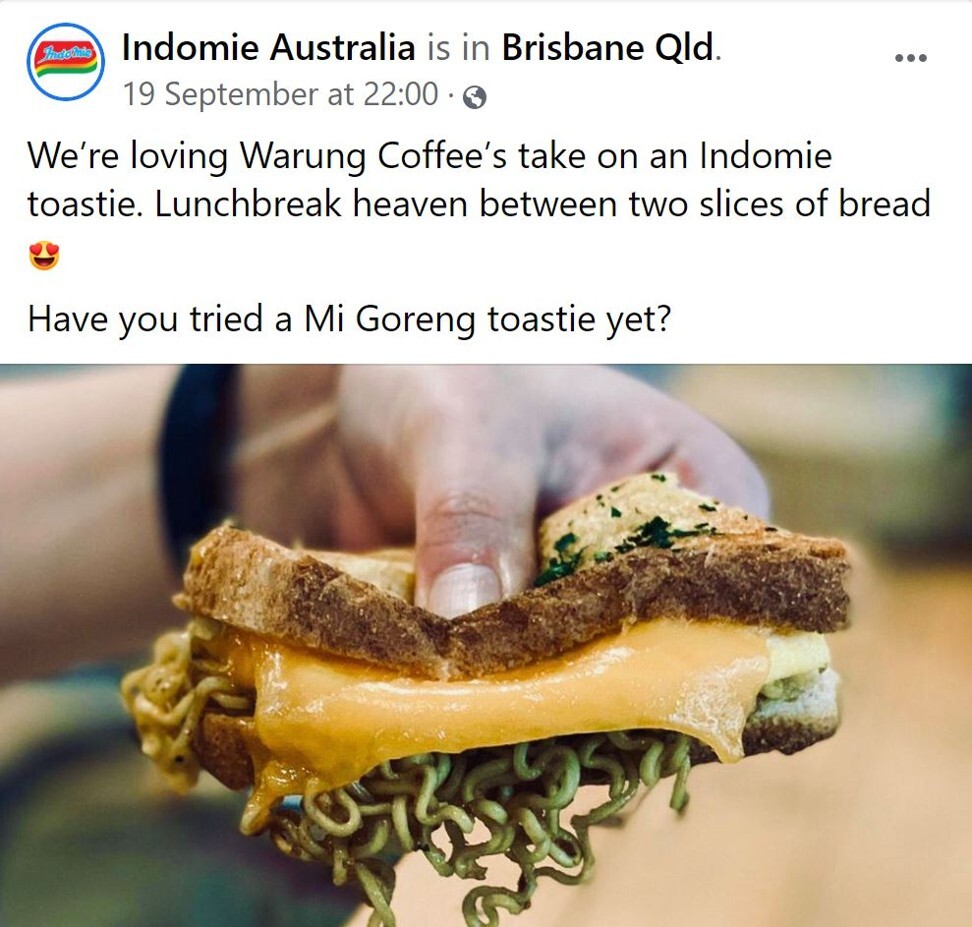
Indonesia’s iconic Indomie is beloved by millions, from students in Europe to prisoners in Australia
- Sold in more than 100 countries, Indomie consistently tops the rankings of the world’s best instant noodles, especially its classic Mi Goreng flavour
- Expressions of love by fans include rap songs and Indomie-scented candles, while in Australia’s Victoria state, Indomie is the prison food of choice
The list saw a group of US food writers and chefs ranking 10 of their favourite instant noodles, and classified them into three categories: soupy, saucy and spicy.
Indomie’s original flavour, Mi Goreng, and its barbecue chicken variation, top the best saucy instant noodles list due to their “strong savoury flavour that comes from an onion oil and fried onions”, San Francisco Chronicle restaurant critic Soleil Ho told NYMag. This particular variant only costs US$0.50 in the United States.
Ho told the magazine that she had been eating Indomie since she was “in elementary school, when my cousins and I would prepare ourselves instant noodles when our parents were out”, adding that her favourite topping was a sunny-side up egg.
In Germany, PhD student Pia Dannhauer told This Week in Asia that Indomie was her “guilty pleasure [meal] for lunch between lectures” during her undergraduate studies in the Netherlands.
“My flatmates and I could literally look at each other and say, ‘Indomie?’ simultaneously any time we were actually planning on cooking together,” the 27-year-old said.
As Dannhauer is a vegetarian, her favourite Indomie is “the vegetable one”, which only costs around €0.40 (US$0.50). Typically, she only cooked what was in the package, although she once felt a little more adventurous.
“I actually once made a noodle salad from it, with some added Napa cabbage and a dressing made from the spice pack, plus some soy sauce and spices,” she said. “The taste was somewhere between umami and far too salty, I would say.”
A beloved brand
The experiences by Ho and Dannhauer explain why Indomie is a cult favourite instant noodle brand worldwide: it is tasty, cheap, versatile, and convenient.
The iconic Mi Goreng flavour was launched in 1983, and has been beloved by Indonesians and overseas fans ever since. When its creator, Nunuk Nuraini, died in January this year, it triggered nationwide grief and made global headlines.
Mi Goreng typically comes with seasoning oil, sweet soy sauce, chilli sauce, MSG-rich dry powder, and fried shallots.
To cater to local palates, the noodles sold outside Java island carry chilli powder instead of chilli sauce, but the rest of the ingredients remain the same.
Is nasi lemak from Malaysia or Singapore?
Overseas, the content is similar as Java’s version of mi goreng, but the taste is slightly different, according to Redha Kinanti, an Indonesian living in New Zealand.
“The taste of the Indomie sold here is not as yummy, maybe the MSG [content] is different,” she said.
It’s not the first time Indomie has made it to a rankings list. In 2019, the Los Angeles Times’ Instant Ramen Power Rankings placed Indomie’s barbecue chicken flavour on top, due to its “totally and utterly heavenly” flavour. The classic Mi Goreng was ranked at No 10 as the author deemed it “slightly too sweet”.
On YouTube, Indomie is often featured by food vloggers comparing the best instant noodle flavours.
Indomie lovers have various ways to enjoy the noodles. In Indonesia, a classic way to enjoy it is with a simple topping such as a fried egg or chops of chillies. Others have also cooked it into burgers, doughnuts and martabak (folded omelette pancake).
In neighbouring Malaysia, there is a restaurant dedicated entirely to Indomie. Called Indobowl, its menu consists of meals such as Indomie topped with salted-egg chicken or rib-eye.
In Nigeria – where Indomie is so popular it is a synonym for noodle – seafood and vegetables are sometimes added into the mix, while in Australia, a local coffee shop has turned it into a toastie.
In 2019, an Australian shop’s mi goreng-scented candle caused an online uproar among Indonesians.
Rise of Indomie
Indomie was introduced in 1972 by Medan-based Sanmaru Foods Manufacturing, which in 1984 acquired fellow noodle-maker Sarimi Asli Jaya, a subsidiary of Bogasari flour mills, owned by Chinese-Indonesian conglomerate Liem Sioe Liong. Together with Liem’s Salim Group, Sanmaru set up a company called Indofood Interna Corporation.
In 1990, Liem set up a company called Panganjaya Intikusuma, later renamed Indofood Sukses Makmur, and became the parent company of 18 of Salim Group’s food companies, including Indofood Interna Corporation, the producer of Indomie. This marked the start of Indomie’s expansion overseas, including the first headquarters in Nigeria to serve the African market in 1995.
The story of Kikkoman, Japan’s most popular soy sauce
Today, Indomie is available in some 100 countries, and more than 15 billion packets of noodles are produced every year. Aside from Nigeria, Indofood also runs factories in Kenya, Morocco, Serbia, Saudi Arabia, Egypt and Turkey.
Indomie’s popularity has prompted many to pay it homage, such as through rap songs.
So popular is Indomie in Africa, in December last year a researcher in Ghana revealed that Indomie was used a tool to lure young girls into the sex trade, alongside cellular credit and e-money.
In 2018, Australia’s Nine News Melbourne reported that the Victoria state government spends more than A$500,000 (US$365,400) for a two-year supply of Indomie – the favourite instant noodles of inmates there.


